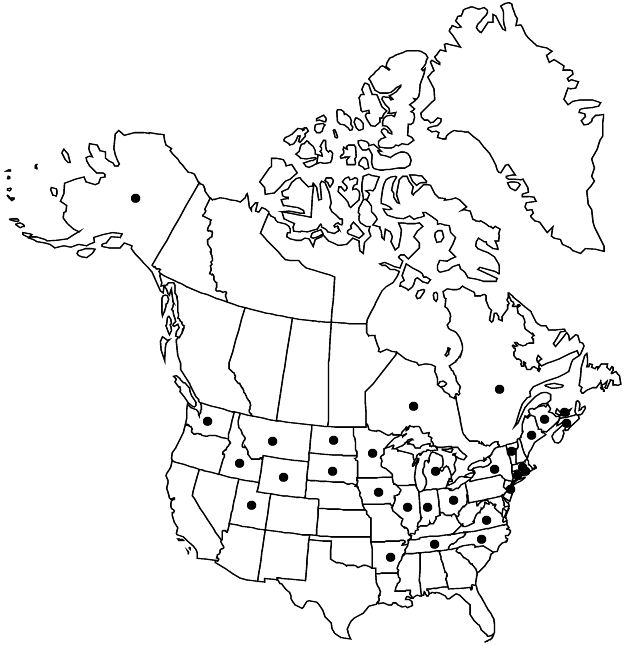Rubus idaeus subsp. idaeus
Stems to 1 cm diam., eglandular; bark usually not peeling with age. Leaves: petiole eglandular; leaflets 3–5(–7), terminal broadly ovate to oblong-ovate, base cordate, unlobed or lobed in larger leaflets, apex acute to acuminate, laterals acute to attenuate, abaxial surfaces eglandular. Flowers: sepals eglandular. Fruits: drupelets 20–60, coherent, separating without torus attached. 2n = 14.
Phenology: Flowering May–Jul.
Habitat: Fields, roadsides, disturbed areas, dry soil
Elevation: 0–2000 m
Distribution

Introduced; N.B., N.S., Ont., P.E.I., Que., Alaska, Ark., Conn., Idaho, Ill., Ind., Iowa, Maine, Mass., Mich., Minn., Mont., N.J., N.Y., N.C., N.Dak., Ohio, R.I., S.Dak., Tenn., Utah, Vt., Va., Wash., Wyo., Eurasia, Africa.
Discussion
In the flora area, subsp. idaeus primarily is an escape from cultivation. M. L. Fernald (1919b) reported a thornless form (forma inermis Kaufmann) as apparently native to the Magdalen Islands, Quebec, and Minnesota. L. H. Bailey (1941–1945) concluded that typical R. idaeus might be native to the northern regions of North America. Subspecies idaeus usually has narrow prickles but rarely can have some bristles.
Selected References
None.